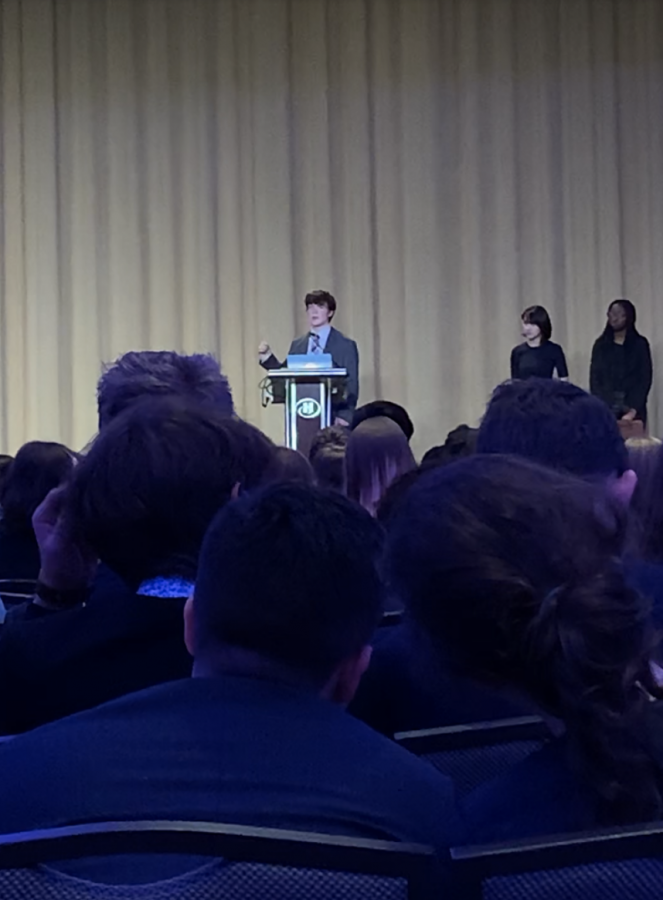By Salman Jaffer
 Last summer, the United States Women’s Soccer Team claimed the FIFA world cup after a 5-2 win against Japan in triumphant fashion. The team’s victory not only conveyed and reaffirmed its dominance over the rest of the women’s soccer teams in the world, but it also came alongside a more significant message: women’s soccer can and should be taken as seriously as men’s soccer at all playing levels.
Two weeks ago, the U.S women’s national team filed a lawsuit for wage discrimination, essentially claiming that the United States Soccer Federation has not bought into the aforementioned message they’ve sent as a result of their world cup victory and tremendous success in the past four years. The players and their lawyers are arguing that the U.S women’s soccer players should be paid and treated equal to men’s soccer players on the U.S National team; women are currently paid four times less than men despite having produced nearly 20 million dollars in revenue in the past year.
The United States Soccer Federation responded to the lawsuit by saying that the women’s team had previously agreed to a collective bargaining agreement that lasts until the end of this year, and it will not renegotiate contracts with the players before the CBA expires. Additionally, the USSF wrote a detailed letter explaining how it has supported and enhanced women’s soccer for the past 30 years, while implying that it never intended to give partial pay or treatment to men. What the USSF doesn’t realize, however, is that this suit is not about the past, but instead, the present and the future of not only women’s soccer but also girls’ soccer at all playing levels.
Those who full-heartedly agree with the suit, such as writer Michael Powell of the New York Times, bring up the Fair Labor Standards Act of 1930 that made it illegal to pay people differently for the same job. He writes, “these women are taking risks, enduring concussions and ripped knees. They also train, practice, and travel as much as the men do.” Powell brings up a fair point: there should be pay equality for people with the same job regardless of gender or any other discriminatory factors.
However, the most important takeaway of this wage lawsuit is that in the context of professional soccer, there should be fair, not necessarily equal, pay. The reality in the professional sports industry is that players are compensated based on the revenue that the league or federation generates. In this case, the men and women’s national soccer teams are paid by the USSF based on the total earnings of ticket sales, merchandise, agreements with FIFA, television contracts and more. But U.S Women’s soccer has generated 2 million dollars more in revenue than the men’s team and is projected to top the men’s revenue by over 7 million dollars in 2017. With that said, they deserve to be paid in accordance to these revenues, not 4 times less than men.
Whether the USSF eventually renegotiates to pay women fairly or not, this suit stands crucial in highlighting the successes of women’s soccer and their support of gender pay equity. US soccer fans can expect this team to increase their intensity even more in their upcoming games, especially during the Olympics, in order to prove to the USSF and naysayers everywhere that they should be treated as competitive professional soccer players, regardless of gender, who are honorably representing their country on the world stage.
This wage lawsuit stands as an inspiration to girls soccer players across the globe at all playing levels. When asked about the impact of the wage discrimination lawsuit, senior captain of Girl’s Varsity Soccer Madison Gilbreth said, “The lawsuit filed by U.S Women’s Soccer ensures that girls can look forward to playing a game that they know fully supports women as much as, or even more than men.” By filing the suit in the first place, the players on the women’s national team–– many of whom are seen as role models to younger female soccer players everywhere–– have essentially laid the groundwork for a better, more prosperous future regarding the development and success of women and girl’s soccer at all levels of the game.]]>
Last summer, the United States Women’s Soccer Team claimed the FIFA world cup after a 5-2 win against Japan in triumphant fashion. The team’s victory not only conveyed and reaffirmed its dominance over the rest of the women’s soccer teams in the world, but it also came alongside a more significant message: women’s soccer can and should be taken as seriously as men’s soccer at all playing levels.
Two weeks ago, the U.S women’s national team filed a lawsuit for wage discrimination, essentially claiming that the United States Soccer Federation has not bought into the aforementioned message they’ve sent as a result of their world cup victory and tremendous success in the past four years. The players and their lawyers are arguing that the U.S women’s soccer players should be paid and treated equal to men’s soccer players on the U.S National team; women are currently paid four times less than men despite having produced nearly 20 million dollars in revenue in the past year.
The United States Soccer Federation responded to the lawsuit by saying that the women’s team had previously agreed to a collective bargaining agreement that lasts until the end of this year, and it will not renegotiate contracts with the players before the CBA expires. Additionally, the USSF wrote a detailed letter explaining how it has supported and enhanced women’s soccer for the past 30 years, while implying that it never intended to give partial pay or treatment to men. What the USSF doesn’t realize, however, is that this suit is not about the past, but instead, the present and the future of not only women’s soccer but also girls’ soccer at all playing levels.
Those who full-heartedly agree with the suit, such as writer Michael Powell of the New York Times, bring up the Fair Labor Standards Act of 1930 that made it illegal to pay people differently for the same job. He writes, “these women are taking risks, enduring concussions and ripped knees. They also train, practice, and travel as much as the men do.” Powell brings up a fair point: there should be pay equality for people with the same job regardless of gender or any other discriminatory factors.
However, the most important takeaway of this wage lawsuit is that in the context of professional soccer, there should be fair, not necessarily equal, pay. The reality in the professional sports industry is that players are compensated based on the revenue that the league or federation generates. In this case, the men and women’s national soccer teams are paid by the USSF based on the total earnings of ticket sales, merchandise, agreements with FIFA, television contracts and more. But U.S Women’s soccer has generated 2 million dollars more in revenue than the men’s team and is projected to top the men’s revenue by over 7 million dollars in 2017. With that said, they deserve to be paid in accordance to these revenues, not 4 times less than men.
Whether the USSF eventually renegotiates to pay women fairly or not, this suit stands crucial in highlighting the successes of women’s soccer and their support of gender pay equity. US soccer fans can expect this team to increase their intensity even more in their upcoming games, especially during the Olympics, in order to prove to the USSF and naysayers everywhere that they should be treated as competitive professional soccer players, regardless of gender, who are honorably representing their country on the world stage.
This wage lawsuit stands as an inspiration to girls soccer players across the globe at all playing levels. When asked about the impact of the wage discrimination lawsuit, senior captain of Girl’s Varsity Soccer Madison Gilbreth said, “The lawsuit filed by U.S Women’s Soccer ensures that girls can look forward to playing a game that they know fully supports women as much as, or even more than men.” By filing the suit in the first place, the players on the women’s national team–– many of whom are seen as role models to younger female soccer players everywhere–– have essentially laid the groundwork for a better, more prosperous future regarding the development and success of women and girl’s soccer at all levels of the game.]]>
Categories:
USWNT Wage Discrimination Lawsuit
April 17, 2016

3
0
More to Discover






















































epontike • Apr 18, 2016 at 12:15 pm
“In 2017 alone, the USWNT will generate $8 million more in revenue for U.S. Soccer than the USMNT”
according to
http://www.huffingtonpost.com/entry/united-states-womens-soccer-equal-pay_us_56fd37e3e4b0daf53aeee5d7
…
sjaffer2 • Apr 18, 2016 at 12:32 am
@HenryMarkarian, what do you mean by managing companies? And it’s all about how much revenue each team generates during a given time period. Sure, the men’s team generates way more from endorsements every year and also attracts way more viewers on tv, but even with that, the evidence suggests that the women’s team has generated more overall revenue for the U.S Soccer Federation than the men’s team in 2015 and so far in 2016. So, right now, the men are technically not bringing in more money. That will obviously change because the men’s game is more popular overall.
Henry Markarian • Apr 17, 2016 at 10:55 pm
But is it fairly? Correct me if I’m wrong, but as far as I know, athletes are paid a sort of perceived commission in relation to the amount of money they bring to their managing companies. For soccer games, it is fairly safe to assume that a majority of their income comes from ads and sponsorships, which are both heavily influenced by viewership. According to http://www.socceramerica.com/article/68281/tv-viewers-us-men-vs-us-women.html, men’s soccer viewership is anywhere from 70-210% more than women’s soccer, meaning that the managing company of both would make more off of men’s teams, right? So would it not make sense to pay the men’s teams more if they bring in more money? I’m all for coed leagues and pay parity, but this has nothing to do with sexism.